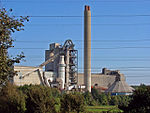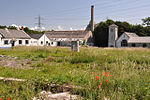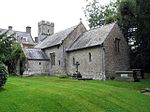St Athan Road railway station
Disused railway stations in the Vale of GlamorganFormer Taff Vale Railway stationsPages with no open date in Infobox stationRailway stations in Great Britain closed in 1930Railway stations in Great Britain opened in 1892 ... and 2 more
St AthanUse British English from March 2015
St Athan Road railway station served the village of St Athan in the Vale of Glamorgan in South Wales.
Excerpt from the Wikipedia article St Athan Road railway station (License: CC BY-SA 3.0, Authors).St Athan Road railway station
B4265,
Geographical coordinates (GPS) Address External links Nearby Places Show on map
Geographical coordinates (GPS)
| Latitude | Longitude |
|---|---|
| N 51.4011 ° | E -3.3944 ° |
Address
St Athan Road
B4265
CF62 3JB , Llancarfan
Wales, United Kingdom
Open on Google Maps









